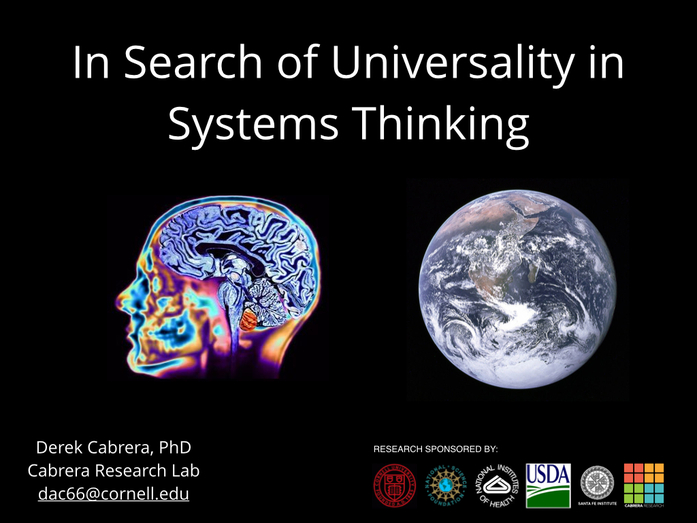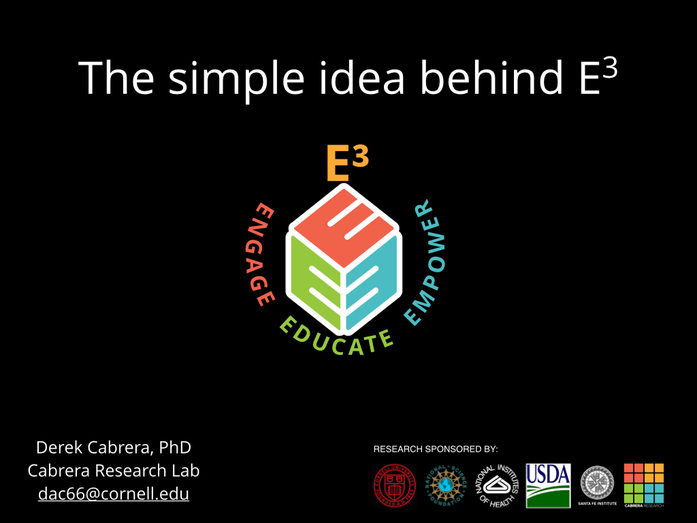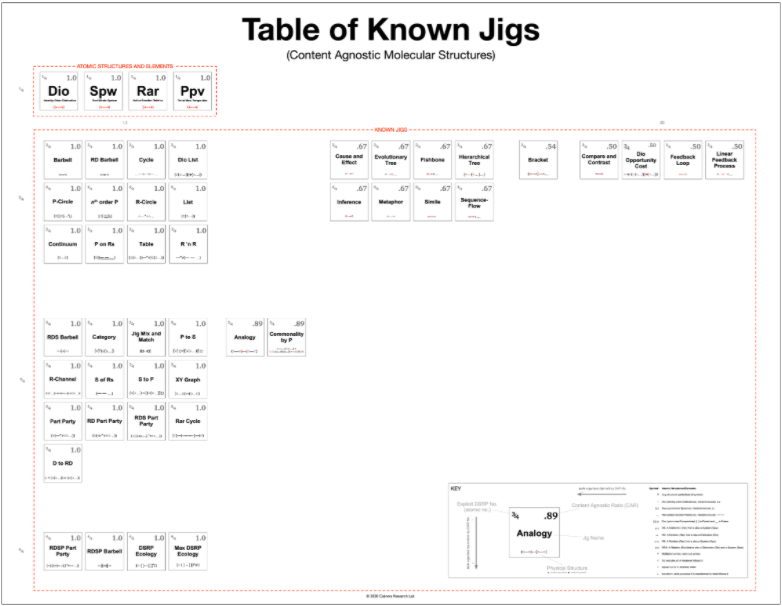My Alma Mater was My Family Dinner Table
 Derek & Laura Cabrera
·
2 minute read
Derek & Laura Cabrera
·
2 minute read
 Dr. Cabrera's "Dinner Table Story" has become so requested that a reenactment was added to CRL's STML500 Certificate in Systems Thinking.
Dr. Cabrera's "Dinner Table Story" has become so requested that a reenactment was added to CRL's STML500 Certificate in Systems Thinking. My family dinner table was my alma mater. It’s the place I learned to love the pursuit of knowledge. It’s the place I learned to think. My mother’s only hard and fast rule was that we all had to be at dinner every night. Each night we talked about everything under the sun, from the silly to the serious: what we did at school that day, squabbles with my siblings, current events, politics, science, religion, anything.
We played with our food; in fact, we were encouraged to do so. My father had a strange habit of using anything on the table—food, salt and pepper shakers, forks, knives, napkins, and even the plates—to represent any idea he was explaining in whatever topic we were discussing.
“Dad, what do they mean by Reaganomics?”
“Reaganomics is a portmanteau,” he’d say, “a word that fuses President Reagan and economics,” squishing two chunks of soft bread together. Then he shaped the new piece of bread into a bowl and held it out for us to see. He continued, “Reaganomics has four key components,” dropping a piece of diced chicken into the bread bowl as he listed each one. “Reduction of government spending, regulation, taxation, and inflation.” And so it continued.
“Dad, what’s regulation mean?”
“Well, if you take this large spoon and this small spoon and scoop rice from the bowl, you’ll see that the structure of the spoon—its size—regulates the amount of rice that...”
And so it went every night at dinnertime.
These early experiences had a great effect on me. First, it became virtually impossible for me to eat at my friends’ houses. More importantly, adopting my father’s habit gave me an eye, a feel, and a love for ideas that led me to the formal study of how we create them. It gave me an eye for ideas, because I could actually see ideas on the table. Literally, they were no longer entangled in my head—they were right on the table in front of me. Visible. It gave me a feel for ideas: I could hold any idea in my hand, manipulate it, move it around, and combine it with others. I could take an idea from my brother, change it, add or subtract from it, and hand it back to him. Ideas were literally and figuratively, tangible. It gave me a great love of ideas: they were to be played with, constructed, combined, interrelated, explored. The world of ideas became my favorite playground. Knowledge became my muse.
While other kids were building skyscrapers and dinosaurs, I was building ideas. I became fascinated early on with how we make ideas and how we are able to share them with others—this led to more than fifteen years of formal research into the process of constructing ideas among any and all learners. This process is the crux of education.
I didn’t know it then, but my father’s dinner table habits taught me how to construct and deconstruct knowledge. I learned to distinguish and differentiate ideas, to break ideas into parts or merge them into wholes, to make connections between and among ideas, and to consider things from different points of view. In short, I learned how to think.
Today, I am a cognitive scientist and systems theorist at Cornell University. I now have the insight of scientific research that these basic skills—which I learned at the family dinner table— are critically important for mental health, personal success, and a just society.
Excerpt adapted from: Cabrera, D., & Cabrera, L. (2008) Thinking at Every Desk: Four Simple Skills to Transform Your Classroom. Odyssean.
Reprinted in the Learning 4Life Newsletter
.png?width=150&height=150&name=CRL%20GOAT%20Logo%20(4).png)


